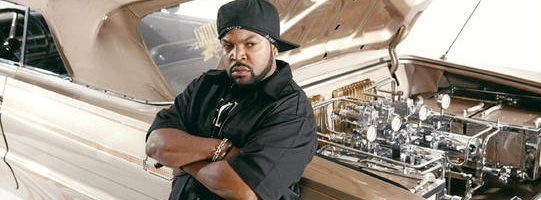You are using an out of date browser. It may not display this or other websites correctly.
You should upgrade or use an alternative browser.
You should upgrade or use an alternative browser.
Able to upgrade not just the speed but manufacturer of CPU?
- Thread starter second exodous
- Start date
rygD
Nihilistic Mystic
If that is the case maybe they shouldn't have been so demanding about who designed the rest of the hardware.
Grench
Forum Addict!
- Joined
- Oct 3, 2008
- Messages
- 6,629
If that is the case maybe they shouldn't have been so demanding about who designed the rest of the hardware.
I think they keep asking the wrong people to design their portable stuff.
The Nvidia Shield was clearly designed by someone into console gaming - and didn't care a bit about actual portability. It's a full sized console game controller with a screen tacked on like an afterthought.
Then they built a tablet that was designed by someone into tablet use - and didn't care a bit about actual gaming - then added a full sized game controller designed by someone who didn't care about portability.
Then they built a TV set top box with a full sized gaming controller - which is about right for the console gaming crowd, but it doesn't have the software support and game selection that someone expects for an attached to TV console.
So - Nvidia has had 3 strikes trying to use their SoC on their own. Maybe now they're more willing to let someone buy their SoCs and give it a go?
Here's the kicker, though - the Tegra 4 was designed and built around the same time as the OMAP 5. They were both released in Q2 of 2013.
"Linux support[edit]
Nvidia distributes proprietary device drivers for Tegra through OEMs and as part of its "Linux for Tegra" (formerly "L4T") development kit. As of April 2012, due to different "business needs" from that of their GeForce line of graphics cards, Nvidia and one of their Embedded Partners, Avionic Design GmbH from Germany, are also working on submitting open source drivers for Tegra upstream to the mainline Linux kernel.[83][84] Nvidia co-founder & CEO laid out the Tegra processor roadmap using Ubuntu Unity in GPU Technology Conference 2013.[85]
"
That was in 2013. I have never seen any Linux device using a Tegra SoC. Has anyone?
That was in 2013. I have never seen any Linux device using a Tegra SoC. Has anyone?
Does this count? http://www.anandtech.com/show/9779/nvidia-announces-jetson-tx1-tegra-x1-module-development-kit
rygD
Nihilistic Mystic
@Grench If they designed the Pyra it would probably be prefect for the netbook crowd, but fail when it came to portability and the built in game controls. Maybe they would have included a controller.
I haven't looked, but I know of no Linux devices with a Tegra. I need to look into some of that information before I say that maybe the Pyra could become one. It might be nice if everything kinda worked out well with that and we got everything we wanted. Not sure what to do about the heat.
I haven't looked, but I know of no Linux devices with a Tegra. I need to look into some of that information before I say that maybe the Pyra could become one. It might be nice if everything kinda worked out well with that and we got everything we wanted. Not sure what to do about the heat.
rygD
Nihilistic Mystic
Hmmm...rapper and actor, soCurious ice cube. Isn't that a raptor?

Nvidia could produce a board for the Pyra if they want, since we're modular anyway, unfortunately their stuff seems to produce a lot of heat.Considering the Tegra X1 is available on a sort of breakout board I would imagine nVidia isn't directly opposed to the idea of letting someone produce another one for the Pyra.
fusion_power
Advanced Member
We just have to pretend to hate AMD, so NVidia will love us for sure!We just need to convince them of that.
God Ginrai
Godmaster
Hmm... well the Jetson TK1 board runs linux. Also there are TK1 Chromebooks and my understanding was that Chrome OS used a patched Linux kernel.
IIRC, ChromeOS is just dressed up Gentoo without the processes that make it Gentoo. So yes, it uses a Linux kernel.
Nvidia could produce a board for the Pyra if they want, since we're modular anyway, unfortunately their stuff seems to produce a lot of heat.
"A lot of heat" in comparison to what? From what I understand, the OMAP5 produces a lot of heat as well. So if this produces a similar amount of heat to the OMAP5, then it should be acceptable.
-God Ginrai
Hmm, interesting.
Maybe things could be done backwards: Design a main board on for the Tegra TX1 module.
Probably some things would need to be given up (SD cards, ports, 3G module, etc), since there's just not enough space on Pyra.
Hopefully nVidia makes even smaller Tegra modules in the future.
vcoleiro1
Hardcore Member
- Joined
- Jan 23, 2011
- Messages
- 4,685
I doubt Nvidia would see Pyra as a competitor now. They don't sell the Portable, and haven't for a long time. Plus they have provided the Tegra K1 to JXD of all companies who have finally released the JXD S192 with the Tegra K1. So they obviously have no problem selling the K1 to third party makers of gaming handhelds. .
(In the past there was the Wikipad with the Tegra 3)
And to top it off, the JXD S192 comes complete with "Crazy Finger Joy". Awesome , not many products can claim that
http://www.jxd.hk/game-console/s192/
(In the past there was the Wikipad with the Tegra 3)
And to top it off, the JXD S192 comes complete with "Crazy Finger Joy". Awesome , not many products can claim that
http://www.jxd.hk/game-console/s192/
Last edited:
Hmm, interesting.
Maybe things could be done backwards: Design a main board on for the Tegra TX1 module.
Probably some things would need to be given up (SD cards, ports, 3G module, etc), since there's just not enough space on Pyra.
Hopefully nVidia makes even smaller Tegra modules in the future.
Maybe, it looks pretty small. A few layers of adapter boards would look way funnier though.
ekianjo
Hardcore Member
I doubt Nvidia would see Pyra as a competitor now
How could a small company like Dragonbox be a competitor for someone like nVidia anyway? It's almost preposterous to think it could be. Even production means for the Pyra are WAY too limited to even create any kind of meaningful share on the market - there would likely be a bottleneck in terms of resources/capability/capacity before it went that way. nVidia has none of these problems.
Caine
Hardcore Member
How could a small company like Dragonbox be a competitor for someone like nVidia anyway? It's almost preposterous to think it could be. Even production means for the Pyra are WAY too limited to even create any kind of meaningful share on the market - there would likely be a bottleneck in terms of resources/capability/capacity before it went that way. nVidia has none of these problems.
That line of thinking is how big companies can lose entire markets to startups.
They do? I thought they get crushed by their own weight because the running costs grow exponentially at some point (especcially with greedy CEOs wanting toThat line of thinking is how big companies can lose entire markets to startups.
Similar threads
- Replies
- 55
- Views
- 11K
- Replies
- 8
- Views
- 2K
- Replies
- 10
- Views
- 3K


